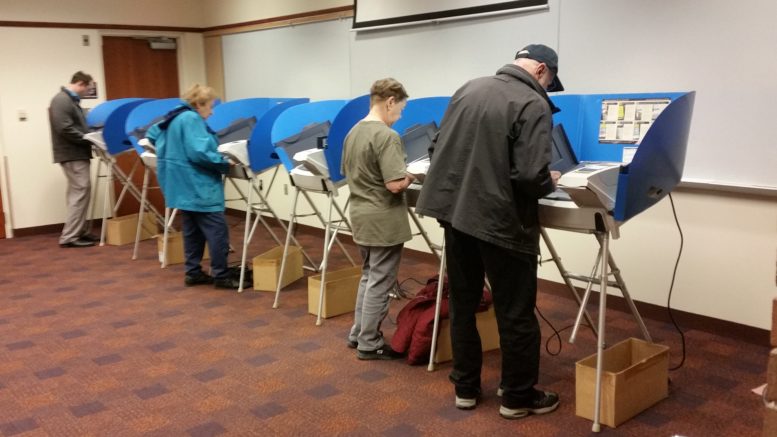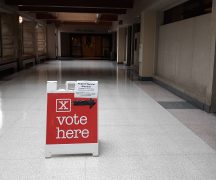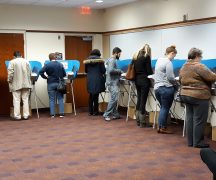By JAN LARSON McLAUGHLIN
BG Independent News
The purging of any names on Wood County voting rolls has been suspended as the U.S. Supreme Court considers the legitimacy of the Ohio policy.
The Supreme Court last week heard arguments on the appeal of a lower court ruling that found the state policy violated a federal law aimed to make it easier for U.S. citizens to register to vote. The 1993 National Voter Registration Act bars states from striking registered voters “by reason of the person’s failure to vote.”
Ohio is one of seven states, along with Georgia, Montana, Oklahoma, Oregon, Pennsylvania and West Virginia, that erase infrequent voters from registration lists. Those opposing the purging called Ohio’s policy the most aggressive.
Registered voters in Ohio who do not vote for four years are sent registration confirmation notices. If they do not respond and do not vote over the subsequent four years, their names are purged from the voting rolls.
The Supreme Court’s ruling, expected by the end of June, could affect the ability to vote for thousands of people ahead of November’s congressional elections.
The arguments in front of the Supreme Court focused on whether or not a state could send a registration confirmation notice based merely on a person’s failure to vote, which the plaintiffs argued is barred by federal law.
Meanwhile, the Wood County Board of Elections is in limbo about updating voter rolls.
“We didn’t do one last year because of the litigation,” said Terry Burton, director of the Wood County Board of Elections. “We’re going to hold status quo until we’re given instructions. Whatever the new construction is, we’ll comply.”
In 2015, more than 3,400 registered voters in Wood County were purged from the voting rolls – at the directive from the Ohio Secretary of State Jon Husted.
The state’s directive ordered county boards of election to wipe voters from the rolls if they had shown “no voter initiated activity” since the last two federal elections. That “activity” included voting, signing petitions or filing for a change of address.
The process required the board of elections office to send out postcards to registered voters who had not voted in the last two federal elections. That postcard was basically asking the citizen, “Are you still there?” Burton said.
If the citizen getting the postcard did not respond, their status went “inactive,” however, they could still vote, Burton said.
But if the person had four more years of no voting activity, they were kicked off the rolls.
A few voters did respond to the notices, Burton said. “Once we get that contact, they’re active again.”
However, in 2016, a federal appeals court found that Ohio’s process for maintaining its voter rolls violated federal law. A judge ruled that Ohio voters who were improperly removed from registration lists could cast ballots in the presidential election.
But since those names had already been purged, the ruling meant if a person showed up at the polls but was not on the official list, they would be allowed to vote by a provisional ballot. A provisional ballot is a paper ballot that is held in a sealed envelope with the voter’s identification. If the identification information was verified by the elections board staff, the provisional ballot was counted.
Wood County Board of Elections did not encounter any citizens purged from the list, who wished to vote, Burton said.
“Those people had been through an eight-year process,” of not voting and not responding to notices, he said.
“Obviously every vote counts,” Burton said prior to the 2016 presidential election. “If they were taken off during one of the purge processes and they are at their same address, their vote will be counted.”
Husted has maintained that the purging was legal and that over five years his office has removed 465,000 deceased voters and 1.3 million duplicate registrations.





